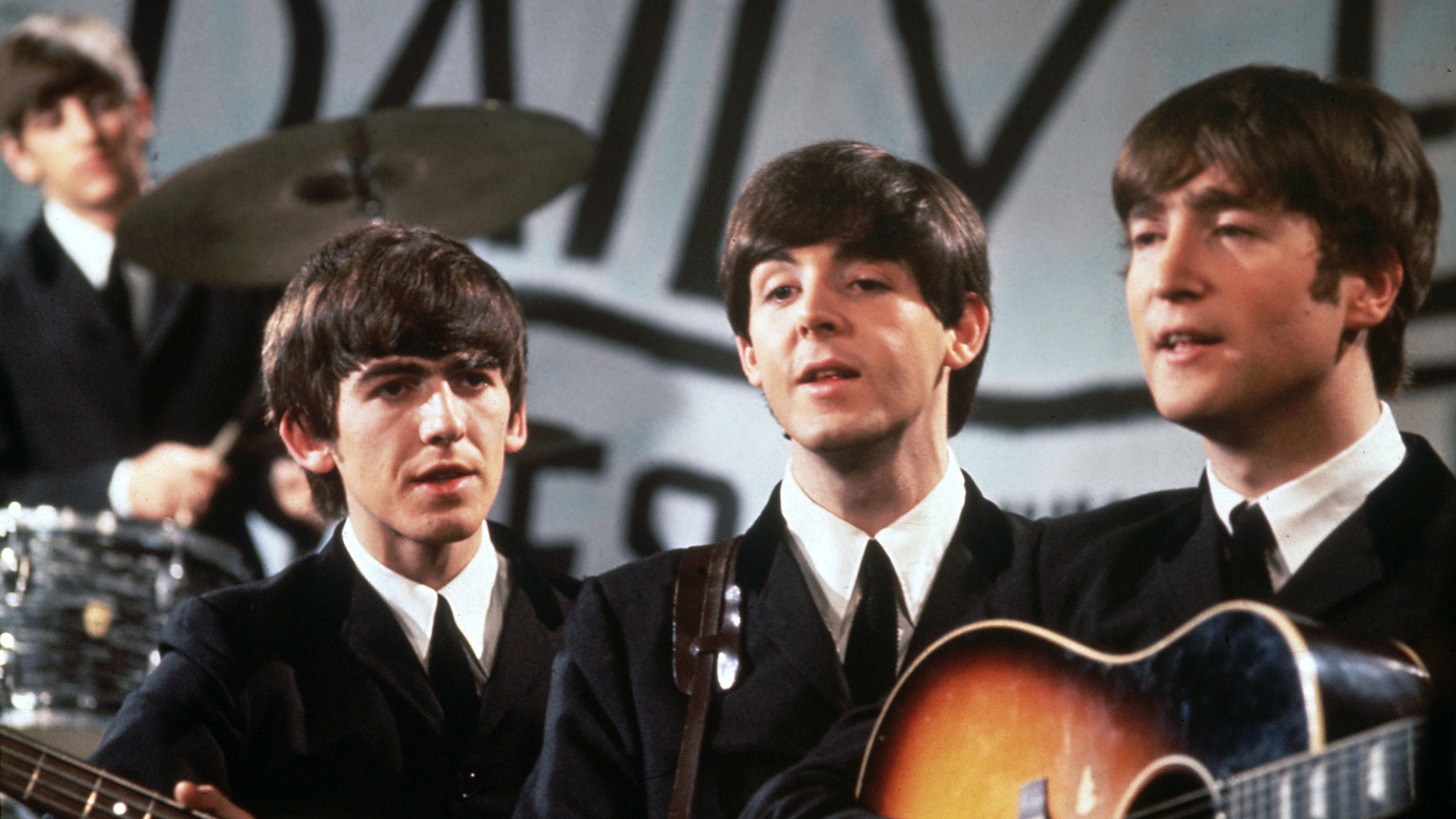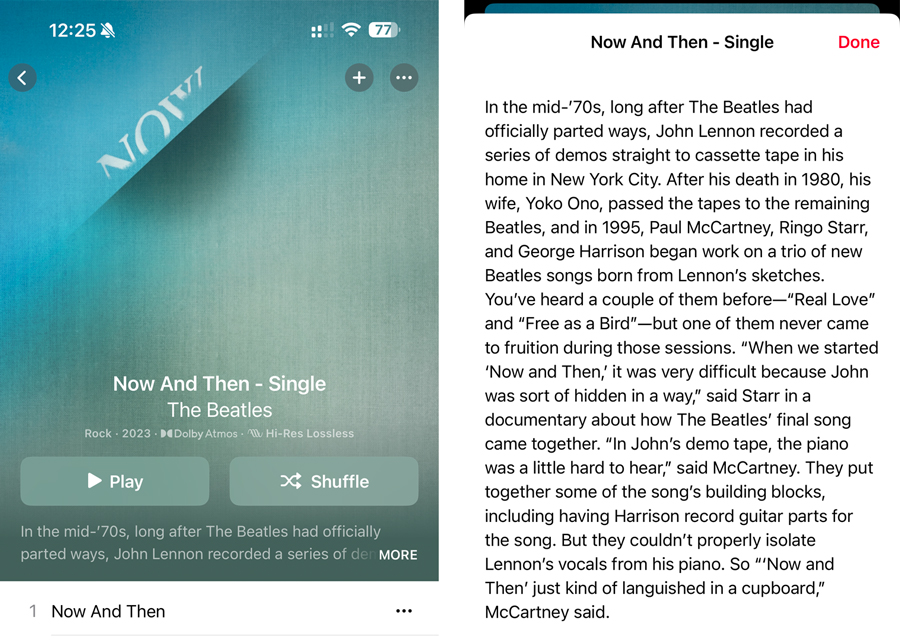
I'm near tears. I just listened to the AI-constructed Beatles song, Now and Then. Built from recovered vocals, new tracks, and some machine learning that may or may not have artificially created John Lennon's voice, the single is unmistakably Beatles, and also the most haunting (or haunted) thing I've listened to in ages. I blame AI, I blame the surviving Beatles, and I blame my easily manipulated heart.
I grew up listening to the Beatles. Sure, the band broke up when I was still in grade school but the quad of Liverpool lads continued making Beatles-infused music well into the late 70s and, who knows, might've reunited had John Lennon not been violently taken from us in 1980.
As described in the liner notes on Apple Music, Now and Then is part long-lost 1970s John Lennon demo tape, part 1995 George Harrison guitar riffs (he died in 2001), and new vocals and drums from the surviving Beatles: Paul McCartney and Ringo Starr.
Let's leave aside the worrisome fact that Lennon recorded this demo after The Beatles broke up, which means he intended it for himself and not as another Beatles tune. Instead, I want to focus on the power of this artificial creation to move people - okay, to move me, and why that worries me.
I'm not surprised at the mournful nature of Now and Then. It fits with Lennon's later oeuvre. Just listen to 1981's Imagine album.
Now and Then is a Frankenstein's monster of a song but, thanks to AI, there are no unsightly stitches or broken brain ruining the melody. It's basically perfect. That's a problem.
There are some who may be celebrating this one last Beatles tune. I won't be one of them.
The beauty of The Beatles is the mass of magnificent creativity they attained in seven short years. It was an explosion, leaving them all emotionally exhausted. They were done with each other and ready to explore new creative possibilities. To their credit, all four of the Beatles went on to illustrious solo careers.

Beatles fans like me dreamed of a reunion, but after John Lennon was killed and George Harrison died of cancer at such a young age, we realized that we had to cherish what we already had.
Many of The Beatles' songs were about living in that moment and remembering the good times. There was ample sadness about what's been lost but not many calls for going back and doing it all again.
With AI, of course, it doesn't matter what the departed Beatles want or the messages they hid in their music. Emotionless AI knows only the task and, yes, it can do it. If there are pieces to assemble into a cohesive whole, it can do it. If there are gaps, it can fill them.
Now and Then is unmistakably a vintage Beatles tune. It's also unmistakably not. John Lennon isn't really singing, and George Harrison isn't standing next to Paul McCartney playing in sync with McCartney and Lennon's vocals. I doubt Ringo Star and Paul McCarney were ever in the same room to record their tracks.
The ambiance The Beatles created in their original recordings is unmistakable, and yet even that is recreated in a fashion by the disinterested AI.
I listened to The Beatles' 'last single' and heard echoes of those familiar voices, that handful of tried and true chords, and I felt a deep and unnerving sadness. I thought it was the song and these lyrics:
"I know it's true, it's all because of you
And if I make it through, it's all because of you"
Until I realized that they might as well have been singing not about a person but the AI that brought this song to life.







